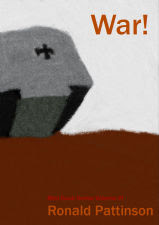Brewery histories can be very useful sources. Though their tone and scope vary immensely. Usually the larger the firm, the less usable information they contain. Large brewing group histories tend to concentrate on the corporate aspects - takeovers and that sort of wheeler-dealing - rather than beer.
But even that type of history can have some stuff for me. As this quote proves. It comes from the mega-corporate history of Bass Charrington. Beer barely gets a mention amongst all the talk of mergers and expansion. There is, however, quite a nice summary of the start of the amalgamation process and how the situation in Scotland differed from England.
"During 1959, while the 'Penam'* discussions were in progress, Taylor had spent a considerable amount of time in Scotland, getting to know some of the leading brewers and preparing the ground for the formation of a Scottish consortium. He recognized, however, that the Scottish brewing industry was different in many ways from the industry as it operated elsewhere in the U.K. It had long been surrounded by a more restrictive framework of licensing which had had at least one major effect. By insisting on the principle of 'one man, one licence' the Scottish licensing authorities had effectively discouraged brewer ownership of licensed premises. The great majority of licensed houses remained in the hands of private individuals who were, in effect, 'free traders'. Where brewers did own outlets they usually put in direct managers; the English tenancy system was largely unknown. This bias on the part of the licensing authorities had far-reaching effects on the structure and development of the brewing industry. As the Clayson Committee subsequently observed: 'The brewers (in Scotland) had to compete for the trade of a large number of individual retailers and, for this purpose, were prepared to undertake long distance deliveries and to compete with equally distant rivals. Thus the pattern of local brewery near-monopolies, exacerbated and extended by brewery amalgamations, never arose.'1
The Scottish brewing industry was, to an even greater extent than in England, dominated by family firms. Prior to 1939 many of them had relied on a flourishing world-wide export trade. Jeffreys, for example, exported a good deal of their lager to West Africa. In the post-war years, however, this export trade rapidly declined as former customers began to develop their own brewing industries under the protection of high tariff walls. This development left a large number of family firms with no option but to compete in the slowly growing domestic market. The most practicable solution was, of course, rationalization but there was a marked reluctance on the part of many family directors to see their beers disappear. In the words of one brewery director: 'Quite a few companies were willing to merge but none wanted to see their breweries closed down.' Consequently, those who were willing to merge, most notably William McEwan & Co. Ltd. and William Younger & Co. Ltd., considerably increased their market power during the 1950s. In 1960 Scottish Brewers Ltd., composed primarily of the McEwan and Younger interests, were easily the biggest single brewing company; other firms repeatedly talked about merging but nothing happened. Most of the small Scottish breweries were also short of capital. But the growth of competition in the home market after 1945 prompted some of them to break with tradition and purchase licensed outlets on their own behalf. The consequent rise in the value of licensed property made this a fairly expensive method of expansion. It absorbed a good deal of capital and left many firms unable either to improve the properties once they had acquired them or, equally important, to modernize their own production plant.2 Thus when E. P. Taylor surveyed the Scottish brewing industry he realized that there was considerable scope for doing what he enjoyed most—putting small firms together."
"A History of Bass Charrington" by K.H. Hawkins, 1978, pages 139 - 140.
It starts with an interesting point about how the Scottish pub trade was run. Is it true that it was licensing authorities that limited the tied house system in Scotland? I'd like to learn more about that point.
I'd already noticed how Scottish brewers, particularly in towns like Alloa, sold most of their beer outside the local market. Lack of tied houses explains why. It could also explain why Scottish brewers exported relatively more than their English colleagues: they were used to selling beer away from home.
It's obvious why dependence on markets it the British Empire would be problematic after WW II. As the Empire melted away, these markets largely disappeared. It was unlikely that the domestic trade would ever be able to take up the slack.
Buying pubs is an easy way to secure trade. But also an expensive one, as British brewers discovered in the dash for tied premises in the 1890's. It meant tying up enormous amounts of capital in the retail side of the business. Especially when other brewers were competing to buy the same pubs. Not a tactic that was likely to bring long-term success to an industry already short of capital.
Eddie Taylor was the Canadian behind the introduction of Carling Black Label to Britain and the driving force behind the rationalisation of the brewing industry. Saviour or destroying angel? A bit of both.
By merging early, McEwan and William Younger got a head start on the rest of the industry. They were able to maintain that dominant position, later as Scottish & Newcastle and Scottish Courage, until their eventual demise in the 21st century.
* short for "pending amalgamation", the negotiations between several Scottish brewers about a merger.








